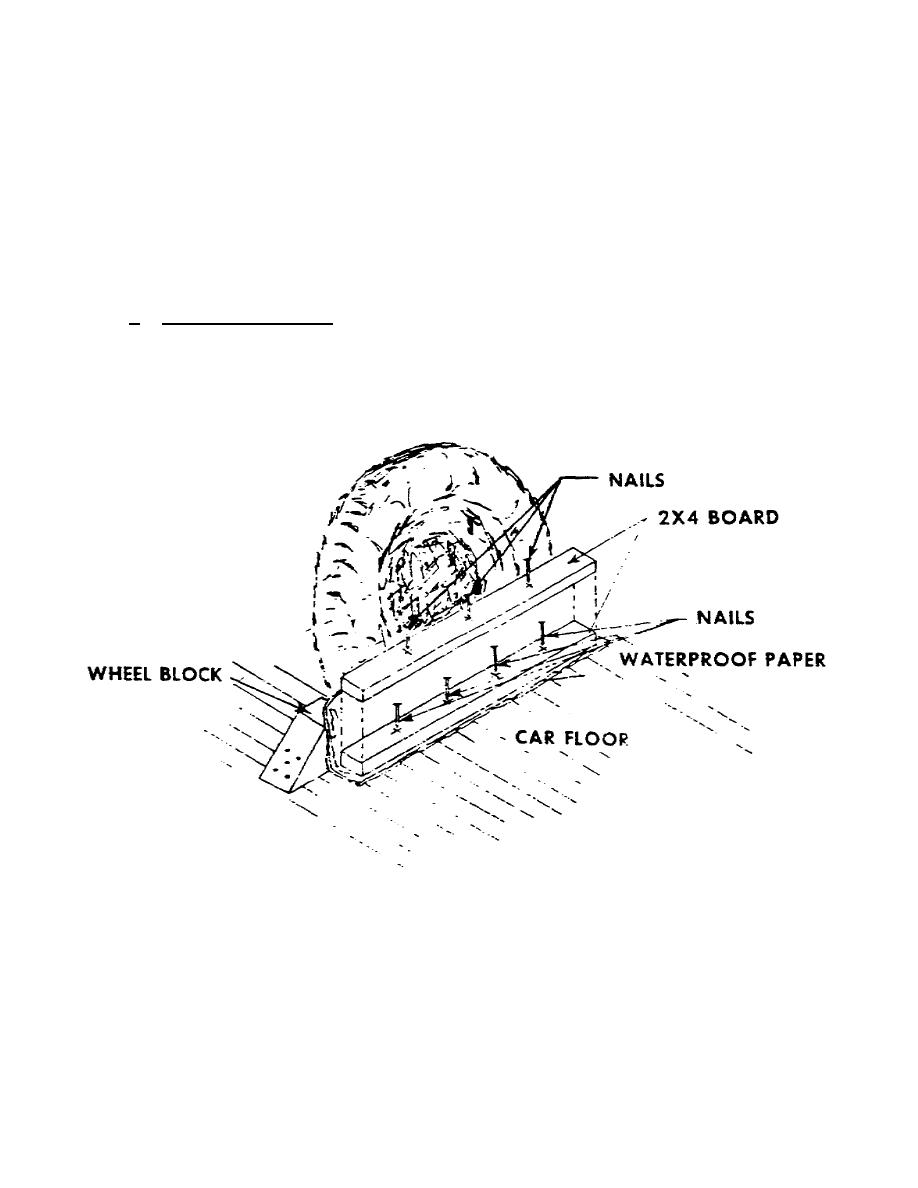
keep moving in the same direction and at the same speed. This is called
longitudinal force. This force is also exerted on the load when the flatcar
lurches as it starts moving. To counteract this force, the load must be
restrained from moving lengthwise on the car. Blocks (item B) are placed
against the wheels as shown in figure 2.4. This block is the same one shown
in paragraph 1.17 and is designated pattern 16 in the AAR rule book. The
45degree angle is inserted against the front and rear of front wheels, in
front of intermediate wheels, and in back of rear wheels. The heel of the
block is nailed to the car floor with three fortypenny (40d) 5inch nails in
a triangular pattern and the sides of the block are nailed down with two
fortypenny nails, one on either side.
b. Transverse force. When a train is going around a curve,
centrifugal, or transverse, force will push the load off the side of the
flatcar unless the load is restrained. Cleats, shown as item D in figure
2.4, are used to counteract this transverse force. A cleat is simply two 2
by 4 by 36inch boards nailed, one on top of the other, along the outer
face of each wheel, as shown in the inset. Secured with 4 1/2inch
thirtypenny nails, the bottom cleat is nailed to the car floor and the top
one to the bottom one. Unless otherwise specified, nails must be driven
into the deck at right angles to the board, for maximum holding power. Note
the waterproof paper in the sketch above and at item C in figure 2.4.
Either waterproof paper or burlap
33


 Previous Page
Previous Page
